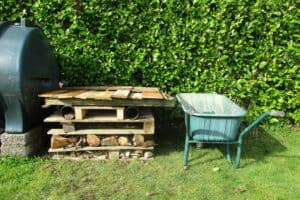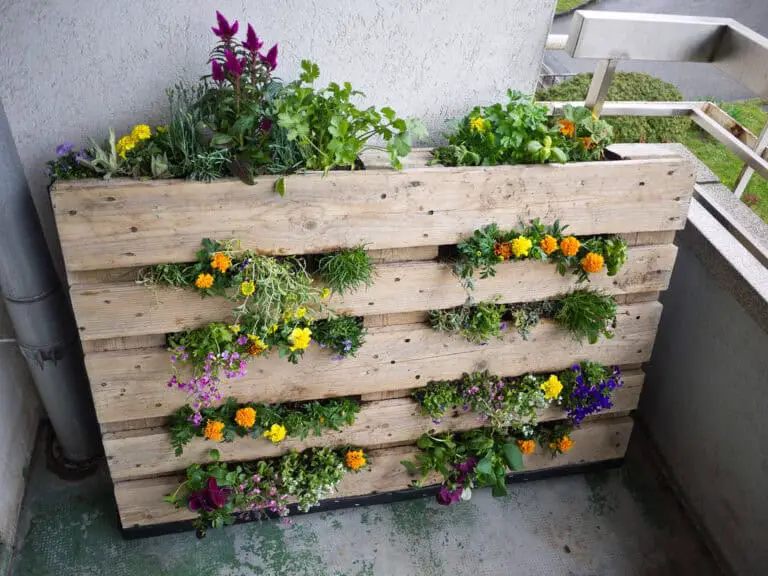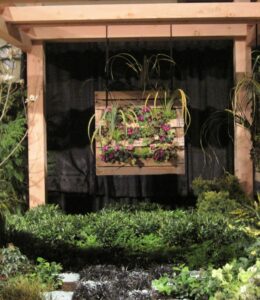Dreaming of revitalizing your garden without breaking the bank? Pallet garden projects are your perfect solution. These creative wood pallet ideas not only add a unique charm to your outdoor space but also offer an eco-friendly way to reuse materials. From vibrant flower beds to functional herb gardens, pallets provide a versatile base for any gardening project.
Finding pallets can be as easy as checking local listings on Craigslist or Facebook Marketplace, where they’re often available for free or at a minimal cost. Many local businesses, like garden and hardware stores, also set them aside for recycling and are usually more than happy to let you take them off their hands. Just remember to ask permission first, as some might be rented or need to be returned.
With pallet garden projects, you’ll transform your outdoor area into a delightful and sustainable retreat. Whether you’re a seasoned gardener or a DIY enthusiast, these upcycled gardening projects are a fantastic way to enhance your home’s exterior on a budget.
Types of Pallet Garden Projects
Pallet gardens offer endless possibilities to enhance your outdoor space, whether you’ve got acres to spare or just a few feet on a balcony. Utilizing old pallets in your garden projects isn’t just cost-effective; it’s also an excellent way to upcycle materials that might otherwise go to waste. Below, explore different types of pallet garden projects that can transform your green space.
Vertical Garden Ideas
Creating a vertical garden with pallets is a fantastic way to maximize your growing space, especially if you’re working with limited room. A wooden pallet herb garden serves as a living wall of herbs, adding both beauty and functionality to your outdoor area. Paint the pallet with exterior paint for a more vibrant look, or leave the wood natural for a rustic feel. Consider growing herbs like basil, cilantro, and mint, which not only thrive in pallet planters but also provide fresh herbs right at your doorstep.
Pallet Garden Beds
Pallet garden beds are perfect for vegetable gardening. Convert two pallets into a pallet garden bed by securing them upright and filling the space with rich potting soil. This type of construction minimizes the amount of bending and kneeling required, making it easier on your back and knees. Vegetables that require more space, such as tomatoes and cucumbers, can be trained to grow up, maximizing the vertical space. Staple landscape fabric to the back of the pallet to keep the soil contained and your plants secure.
Flower Gardens
Flower pallet gardens brighten up any outdoor area and are simple to create. Choose a pallet with slats that are spaced evenly enough to hold potting soil but tight enough to prevent it from falling out. Suitable for both annuals and perennials, you can mix and match flowers like marigolds, pansies, and petunias for colorful blooms. Optionally, add wheels to the bottom of your pallet for a mobile flower garden that can be moved to catch the sun or shade as needed.
Succulent Gardens
Succulent gardens require minimal water and are perfect for a pallet project due to their adaptability to shallow soils. Construct your succulent garden by placing a landscape fabric liner inside a pallet laid flat, then filling it with a sandy potting mix suitable for succulent growth. Arrange your succulents into a beautiful pattern for a striking display. This low-maintenance garden type is perfect if you’re looking for a stylish yet easy-to-care-for addition to your patio or balcony.
Each of these projects not only adds beauty and interest to your garden but also promotes sustainability through the upcycling of wood pallets. Start your pallet garden project today and enjoy a more green and stylish outdoor space.
Designing Your Pallet Garden
Choosing the Right Pallet
When you embark on your DIY pallet garden project, selecting the right pallet is crucial. Look for pallets that are heat-treated (marked with “HT”), as they aren’t treated with chemicals and are safer for growing food and flowers. Avoid pallets that have an “MB” marking, which indicates they’ve been fumigated with methyl bromide, a toxic pesticide. Local businesses, construction sites, and retail industry stores often discard pallets, which you can usually acquire for free. These businesses might have one pallet or two pallets available at a time, offering endless possibilities for your garden designs.
Preparation and Safety Measures
Before you begin your pallet garden project, ensure the pallet is in good condition—free from rot, mold, and protruding nails. Using a staple gun, secure landscape fabric to the back and sides of the pallet to create a sufficient barrier that keeps soil intact and minimizes weed growth. If you plan to paint your pallet, choose non-toxic, exterior paint that won’t leach harmful substances into the soil. This is particularly important if you’re planning a vertical pallet garden or a pallet herb garden, where direct contact with edibles is frequent. For added safety, sanding down the wood can help remove splinters and create a smoother surface for handling and planting.
Building Your Pallet Garden

Tools and Materials Needed
To start on your DIY pallet garden project, you’ll need several tools and materials to ensure a successful build. Gather one or two heat-treated wood pallets—opt for those without chemical treatments for safety. You can usually secure these pallets for free from local businesses or construction sites that no longer need them. Additionally, collect a staple gun, landscaping fabric to line your pallet, and potting soil for planting.
For your garden’s aesthetic, choose exterior paint or stains that are non-toxic to avoid contamination of your herbs and vegetables. Finally, if your design includes moving your pallet garden, consider acquiring some heavy-duty casters from hardware stores to attach to the base of your pallet.
Prepare the Pallet: Start by sanding your pallet to remove any splinters and rough edges, ensuring it’s safe to handle. Apply a coat of your chosen non-toxic paint or stain if you desire a specific look. Allow it to dry completely.
Line with Landscaping Fabric: Cut the landscaping fabric to cover the back and sides of your pallet, and secure it with a staple gun. This step is crucial as it prevents soil from falling out and helps retain moisture.
Fill With Soil and Plant: Tilt your pallet upright and start filling it with a good quality potting soil. Ensure the soil is firm and reaches all corners. Now, you’re ready to plant. If you’re creating a wooden pallet herb garden, space your herbs evenly; for a flower pallet garden, consider design principles like color and height for optimal aesthetics. Remember, a vertical pallet garden not only saves space but also adds a dynamic element to your outdoor area.
By following these guidelines, your pallet garden will be well-constructed and sustainable, transforming old pallets into a thriving component of your outdoor space.
Customizing Your Pallet Garden
Decorative Ideas
Transforming old pallets into a vertical pallet garden not only maximizes your growing space but also adds a touch of unique aesthetics to your outdoor area. You can paint the pallets with exterior paint to match your garden’s theme or leave the wood raw for a rustic appeal. Hanging small pots or attaching planter boxes directly onto the pallet allows you to exploit vertical space, offering endless possibilities for floral and herb displays. If you’re looking to create a striking feature, consider outfitting a single pallet with a variety of succulents or cascading plants to create a living wall that doubles as art.
Functional Additions
For those with limited space, pallet garden beds serve as phenomenal space savers and can be customized for various types of plants. By stacking two pallets, you can build a raised garden bed that makes planting and harvesting easier on your back. This setup is ideal for growing herbs, strawberries, or even small vegetable plants. To enhance functionality, add hinged covers with wire mesh to protect your plants from pests or frost. Incorporating chalkboard paint on the side of the pallets lets you label the plants inside, which not only adds a functional element but also a playful touch to your garden design.
Maintenance and Care for Pallet Gardens

Proper maintenance and care ensure that your pallet garden remains vibrant and productive. Here are tips to help you manage your pallet garden’s watering needs and pest control.
Watering
Efficient watering is crucial in a pallet garden due to the limited root space available in each plank. Pallet gardens dry out faster than traditional garden beds, especially vertical pallet gardens. To mitigate this, install a drip irrigation system that delivers water directly to the roots, minimizing water wastage and ensuring that your plants receive a consistent moisture level. If you’re managing a small horizontal garden, using a watering can will allow you to control the amount of water each plant receives. Remember, the goal is to keep the soil slightly moist but never waterlogged, as pallet wood can rot if consistently damp.
Pest Protecting
Vertical gardens, including those made from upcycled wooden pallets, can be prone to pest infestations if not properly protected. Start by choosing the right location for your pallet garden – a spot that receives ample sunlight and good air circulation helps deter pests. Regularly inspect your plants for any signs of damage and act swiftly to remove pests by hand if necessary.
For more serious infestations, consider organic pest control options like neem oil or insecticidal soap, which are less harmful to the environment and your plants compared to chemical pesticides. Additionally, companion planting can be a natural way to repel unwanted insects; for instance, planting marigolds can discourage aphids and nematodes from attacking nearby herbs and vegetables.
Takeaways
Embracing pallet garden projects not only beautifies your outdoor space but also contributes to environmental sustainability. With the right preparation and creativity you can transform simple wood pallets into thriving garden spaces. Whether you’re growing herbs vegetables or flowers the possibilities are endless. Remember to keep up with the care and maintenance tips to ensure your garden remains vibrant and productive. So grab some pallets and start your gardening adventure today!
Other suggested articles:


